Instructions
Before you start solving complex tasks, practice with a simple example: CAR+CAR=CONSTRUCTION. Write it down in a column, it will be easier to solve. You have two unknown five-digit numbers whose sum is a six-digit number, so B+B is greater than 10 and C is equal to 1. Replace the symbols C with 1.
The sum A+A is a single-digit or two-digit number with a unit at the end, this is possible if the sum G+G is greater than 10 and A is equal to either 0 or 5. Try to assume that A is equal to 0, then O is equal to 5 , which does not satisfy the conditions of the problem, because in this case B+B=2B cannot equal 15. Therefore, A=5. Replace all A's with 5's.
Children tell a friend to put a square around the 9 numbers on the calendar. They are then told that they can instantly find the sum of 9 numbers squared! All they do is multiply the number in the center of the square by 9 and presto! They have a magical answer! Kids love using milk caps because they can slide and slide on a flat countertop. Perimeter Magic TrianglesPerimeter Magic Triangles helps kids improve their addition skills using three additions! All you need is 6 milk caps labeled 1 Children slide around the milk caps to form a triangle.
The sum O+O=2O is an even number and can be equal to 5 or 15 only if the sum H+H is a two-digit number, i.e. H is more than 6. If O+O=5, then O=2. This solution is incorrect, because. B+B=2B+1, i.e. O must be an odd number. So O is equal to 7. Replace all O's with 7's.
It is easy to see that B is equal to 8, then H = 9. Replace all letters with the found numeric values.
Their goal is for all 3 sides to equal the same amount. Dental Puzzles Math Puzzles Geometric Toothpick Puzzles to help develop problem solving and critical thinking skills. Children identify patterns in their times tables.
When they identify a repeating pattern, they create art! Walking on Paper Can you walk through a hole in a 5" x 11" piece of paper? Pass a piece of paper to all your students and see if they can't figure out how to cut a hole large enough for them to fit through. Then show them this magic trick! Then stretch your paper and try to find the area and perimeter of your paper! For younger students, this project can be tied to a basic measuring device.
Replace the remaining letters in the example with numbers: Г=6 and Т=3. You got the correct equality: 85679+85679=171358. The rebus has been solved.
When subtracting, also start with units. If the number of one or another digit being reduced is less than the number being subtracted, then borrow 1 ten or a hundred from the next digit, etc. and do the calculations. Put a dot over the number you borrowed from so you don’t forget. When performing actions with this digit, subtract from the reduced number. Write the result below the horizontal line.
You can even insert an index card! All they need is a set of dominoes! Check out the magic squares and rectangles of dominoes! If you don't have dominoes, you can find printable versions online. Subtracting Squares Children choose 4 numbers to write on the tops of a large square. Then they simply subtract.
Big surprise - their last square! Like magic, all angles are the same number! Conclusion: See if kids can predict what their mystery number will be before solving all their squares! Think of a whole number from 1 to 10 Subtract the original number Number 2? Visit the Algebra Math Lab for this math!
Check the calculations are correct. If you added, then subtract one of the terms from the resulting sum, you should get the second. If you subtracted, then add the resulting difference with the subtrahend, you should get the minuend.
Please note
The digits of the numbers must be located one below the other.
Choose a number, any number! Multiply a number by subtracting the original number from the answer. Add numbers to your answer. Robin is eight years old and attends primary school in Nauheim. Like other participants, she has a hand with problems that are partly related to classical computer problem solving. How many wooden cubes are the body depicted on paper? Eat different ways answer the question. Robin chose to practice and build the body and then coax the wooden cube she used.
For five weeks, always on Fridays after class, a group of ten people, together with teacher Friederike Schröder and a high school student, met to test mathematics as a challenge. Each session of the season had a specific slogan such as logic, number, space and the third dimension. The last meeting is “mathematics is very convenient.”
In linear algebra and geometry the concept vector defined differently. In algebra vector om is the element vector nogo space. In geometry vector om is an ordered pair of points in Euclidean space - a directed segment. Over vector We have defined linear operations - addition vector ov and multiplication vector but for a certain number.
What can you buy with a 1 percent tower that reaches from floor to ceiling? This question can only be answered with practical application, because there is a lot to be measured before he comes to the calculation. It targets young people with mathematical competences that are often underestimated in mainstream schooling.
Mathematics teacher Friederike Schröder, who runs the program in Rüsselsheim, teaches at the Gymnasium Neu and also provides meeting rooms. Of the ten participants in the first season, including three girls, three came from primary schools in Mörfelden-Walldorf and Nauheim. Her mom registered her here and they find the puzzling really good.
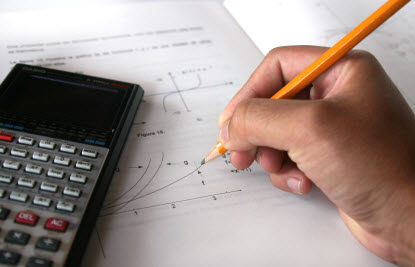
Instructions
The work vector and a for a number? is a number?a such that |?a| = |?| * |a|. Obtained by multiplying by a number vector parallel to the original vector y or lies on the same straight line with it. If?>0, then vector s a and ?a are unidirectional if?<0, то vector s a and ?a are directed in different directions.
Teacher Schroeder can only confirm this. On Fridays it starts at half past three. But most of them are already at 2 pm and want to start work. It's about reinforcing the joy of mathematics. The pleasure principle plays an important role. In a math meeting, it wasn't as harsh as in regular classes.
But anyone who's into math on a Friday afternoon should be excited about this. And why is she so active as a teacher and also attending school on Friday afternoon instead of looking forward to the weekend? She sometimes has a feeling funny things are too short. Puzzles make a lot of fun and are very special to do with kids. She also liked the concept of the math club.
Video on the topic
A rebus is a special riddle in which the searched word is enclosed in pictures containing various letters and numbers. In the pictures you can also see other signs that will help you read the word correctly. Solving puzzles is a very exciting activity that will help you warm up before difficult work. To solve the puzzle, you must remember a number of simple rules.
Clara has already solved her problems and is bored. Shredder gives her a piece of catfish bone in his hand and asks her to put it back together. After a few seconds, the nine-year-old collected the cubes. An important approach for working with K-6 students is to look for solution strategies through systematic testing, Schroeder says. Some people prefer to work alone, others find themselves together in a group and exchange ideas and suggestions.
The decision about who participates in a math meeting is made by the student. There are recommendations from teachers who know their students well. Friederike Schröder plans to offer one season per school year. The teacher emphasizes. Are you ready to challenge your intelligence with a range of math games?
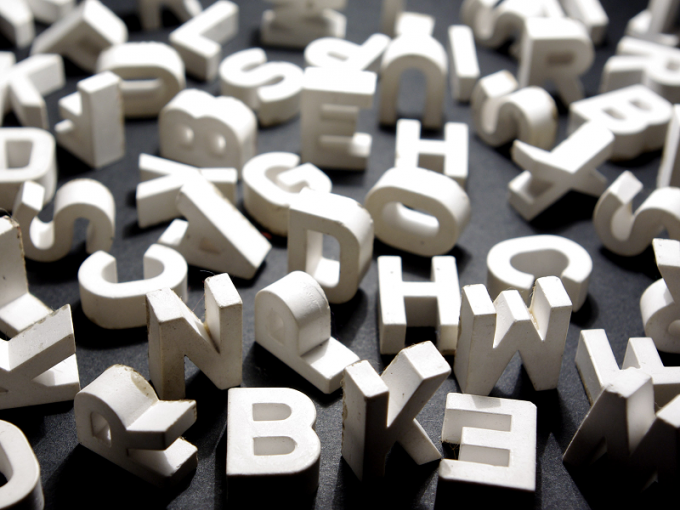
Instructions
The names of any objects depicted in the picture are read only in the nominative case.
Sometimes a drawing may have several names (for example, paw or leg). An item can also have a specific or general name. For example, a flower is a general name, but a specific name is a tulip or a rose. Therefore, if you can correctly guess the object shown in the picture, then consider that the hardest part is over. The simplest and most popular method of solving puzzles is to decipher the pictures in parts. That is, you first need to write down all the names of the objects in order, and then put the text together from them.
Math problems: can you solve this problem? We separate math problems by categories and with their correct ones. In a group of 40 people, how likely is it to have at least two birthdays on the same day? There is a five-digit number in which the fifth digit is equal to half the fourth and the fourth to the third digit. The third digit is half the first digit and doubles the fourth digit. The second digit is three times the fourth and has five units more than the fifth.
You want to cook the egg in 2 minutes. However, you only have 2 hourglasses, one of 5 minutes and another of 3 minutes. How could you put an egg in to cook and take it out in 2 minutes? There are 21 animals in one place, between ducks and dogs. If the total number of legs of these animals is 54, calculate the difference between the number of ducks and the number of dogs.
One or more inverted commas can be drawn to the right or left of the object - this means that one or more letters need to be removed at the beginning or end of the word, respectively.
If there are numbers above the picture, the letters in the word must be read in a certain order - exactly in the order in which the numbers appear.
The bag has 27 snooker balls that all look the same. There is a defective ball that weighs more than the others. We have a scale of 2 people. Demonstrate that the defective ball can be located in only three weighings. Two drunk friends bought 8 liters of wine. They walked, and in the middle of the way they decided to split up, after sharing the wine. For measurements there is an 8-liter drum, a 5-liter canister and a 3-liter canister. How can they share wine equally?
One person, filling out a check, reversed the tens number with the hundreds number. Knowing that two numbers are interconnected, like 1 for 2, they calculate the number on the check, which was written in tens. One car has two passengers in the front seat and three in the back seat. calculate the number of different alternatives to fill a car with 7 people so that one of these people never occupies the front seats.
Crossed-out letters may be written above the picture; therefore, they must be excluded from the name of the object and from the text.
The use of an arrow drawn from one letter to another serves to indicate the appropriate substitution of letters (for example, A-P).
LogicLike knows how to diversify math classes: first of all, by solving entertaining math puzzles at the 4th grade level.
So when my father was born, how old was my great-grandfather? One man spent everything he had in his pocket at three stores. in each of them he spent 1 real more than half of what he had at the entrance. How much did he have when he walked into the first store?
As long as you are my age, the sum of our ages will be 45 years. Some of them are green and others are blue. Under each ball we write a number equal to the sum of the number of green balls to the right of it, plus the number of blue balls to the left of it. If in the sequence of numbers obtained in this way there are exactly three numbers that appear an odd number of times, what could these three numbers be?
Examples of simple tasks with answers
Traditionally, we start by analyzing the solution to the problem from the previous publication - “Math puzzles with answers for grades 2 and 3.” Next, you will find new interesting mathematical puzzles for addition and subtraction with solutions and answers, developed by the methodologists of the Center for the Development of Logic “LOGIC”.
Math Problems Answers
Please note that grandfather could only have been born in the last century! Now we need to factor the two numbers into their respective orders so we can “put together” the equation. We are exactly the same in my grandfather’s case. From Equation 1 we have = 69, and from Equation 2 = Substituting these values into Equation 3, we then have the age of the grandfather when his grandson was born.
We have a system with four variables. However, we only have two equations. To solve the problem, you need to determine the price of two items and then calculate the other two. Then we will have a simple system to solve. Isolating c in the first equation, we have.
Rebus 1. Arithmetic rebus table for ingenuity
Calculate the price of a police car.
Based on the same amounts (A) in the bottom row and first column, we establish that the prices of red and blue cars are equal.
Let's look at the top and middle lines. We conclude that the police car is 4 money more expensive than the blue car.
Therefore a set of possible values for elements. The probability of 40 people not having a birthday on the same day of the year is approximately equal. Therefore, the probability of at least two people having a birthday on the same day of the year is approx. We know that the fifth digit is equal to half the fourth and the fourth third digit.
The third digit is half the first and the second is the fourth. So the first digit is twice the third. 1st digit = 8a. You rotate two time zones at the same time. When 3 minutes is over you will place the egg and when 5 minutes is over you will remove the egg. The total number of ducks and dogs is 21.
Taking the price of blue as x (then the price of the police car is x + 4), we create an equation using the top line:
x + (x + 4) + x = 70 x + x + x = 66 x = 22
Price of a police car: 22 + 4 = 26.
Answer: 26.
Rebus 2. With numbers from 0 to 5
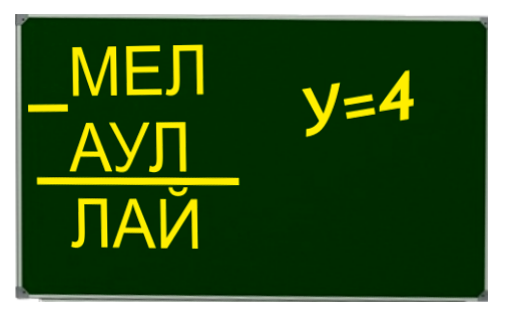
The same numbers are encrypted with the same letters, different ones with different letters. This problem uses only 6 digits - from 0 to 5.
Ducks have 2 legs and dogs have 4 legs. That. Substituting into the second equation, we have. Compare 9 balls with 9 others and leave the remaining 9 in the box. If the balance balances, the heavier ball will be among the nine balls remaining in the box, and if not, it will be among the nine of the most heavily weighted plates. We will divide this set into 3 groups and repeat the operation. So with two heavy ones, we isolate the heaviest ball from the group of three balls.
If we repeat the operation a third time, we will isolate the heavy ball from the others. We filled a 3 liter container. We passed 3 liters to a 5 liter canister. Fill the 3 liter bottle again. Fill the 5 liter canister with another one, with 1. We filled one of the 3 and emptied one of the 5, which, as there was already 1, will have 1 3 =.
What number is encrypted behind the word “BARK”?
The correct answer is found by checking each of the signs.
If we subtract an equal number from a number, we get 0. Let's start the solution using the above thesis. L - L = Y, which means Y = 0. The largest number is 5. From the conditions of the problem it is known that Y = 4, which means E = 5, A = 1. The remaining numbers 2 and 3 are encrypted behind the letters L and M. > L. Accordingly, M = 3, and L = 2.
There is 4 liters in the barrel for another friend. Answer: The number written on the check in the tens house was 3. This is a Math Olympiad problem. Then there are balls of two colors. Numbers repeated an odd number of times will be the same in both configurations. Therefore, it is sufficient to study a configuration in which all red balls are sequential, starting with the first one, and all blue balls are sequential, starting with the last red one.
The solution may be as follows. The problem suggests that in each store the man spent 1 real more than half of what he had upon entering. So there are common combinations between them. We have three situations where this happens. In "left leg" A we have 6 collinear points that cannot be combined together since they do not form triangles.
352 − 142 = 210
Answer: 210.
All these puzzles are part of the LogicLike educational platform. Register and continue solving problems online.
Olympiad puzzles in mathematics for 4th grade students
Rebus 3. What is encrypted behind the “dacha”?
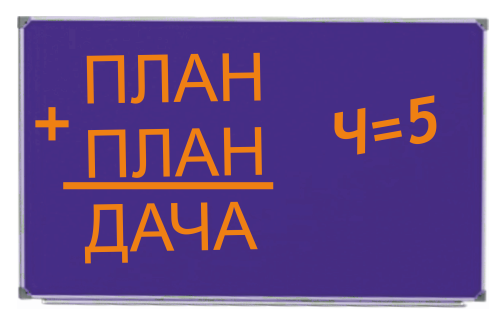
Identical numbers are indicated identical letters, different numbers are different.
What number is hidden behind the word “DACHA”?
When making a decision, we proceed from the fact that P< 5, так как все числа четырехзначные. П ≠ 0, Д ≠ 0, так как первая цифра в числе не может быть равна нулю. А - четное, так как сложение любых одинаковых Н дает четное А.
H = 5, therefore, due to the transition through the ten, A = 2, and H = 6 and L = 1.
D is even, since there is no transition through ten. D ≠ 0, D ≠ 2, D ≠ 6.
If we assume that D = 4, then P = 2 = A, and this option is impossible.
Therefore, D = 8, and P = 4.
4126 + 4126 = 8252.
Answer: 8252.
Rebus 4. Long division
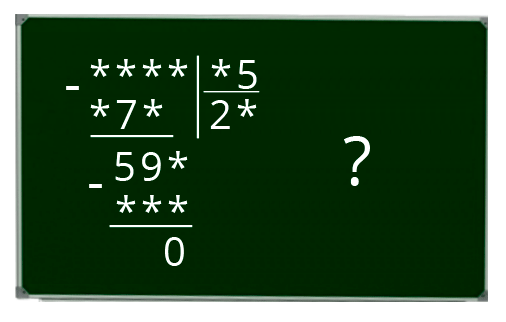
Determine which numbers are hidden behind the asterisks and restore the original form of the division example (before the numbers were hidden by the asterisks).
1. Find the number *7*.
The number *7* is obtained if 2 (the first digit of the quotient) is multiplied by the divisor *5.
2 × *5 = *7*
2 × 5 = 10 – at the end of the number (in the units place) there will be 0. Remember 1 ten.
We are looking for the number by which we need to multiply 2 to get two-digit number with the number 6 at the end. Only 8 fits.
So 2 × 85 = 170.



